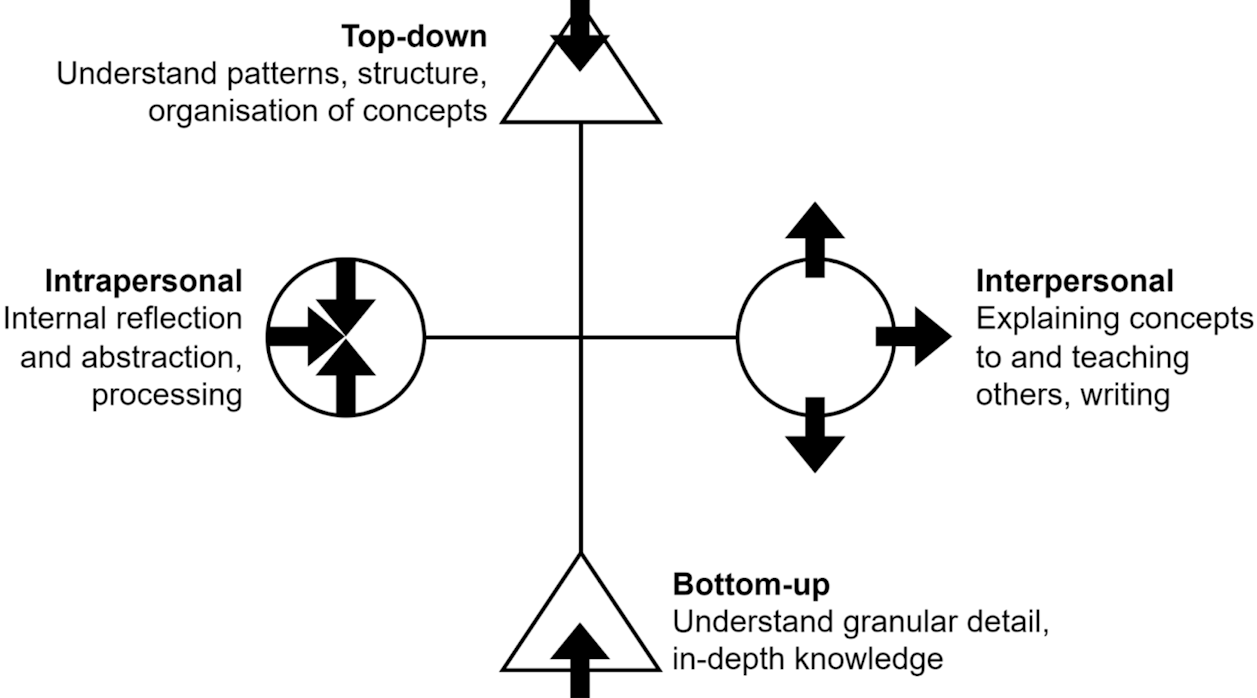
The vertical axis
There are two ways I perceive and access a block of information.
The top-down view is the structure of the information. This describes how the information is organised, and how the concepts interrelate with each other. Scanning the table of contents and top level headings provide the start of such a structure. I visualise structure as a hierarchical tree of headings or as a mindmap of key concepts.
The bottom-up view is the granular in-depth detailed stuff. This is a large collection of concepts. These pieces may or may not relate to other pieces. I think of this as a grab bag full of interesting things to know.
The top-down and bottom-up views play off each other. As I bounce between these views, I eventually end up with a clear framework which contains and organises the in-depth bottom-up detail. If this framework is complex, I will visualise it as a mindmap or a hierarchical tree. Sometimes, if there are too many pieces of information with only loose connections to each other, I pull all the concepts into a database and categoriese/group them into superordinate themes.
The horizontal axis
The horizontal axis shows the two ways I synthesise and bed-down my learning, to create knowledge in the process.
Intrapersonal synthesis is the common way most of us learn. I use my senses (reading, hearing, seeing, touching) to collect material into my brain. Thereafter I think and reflect on the absorbed material to create links between them and with my existing knowledge.
Interpersonal synthesis involves explaining, writing about, and teaching others the concepts I have learned. I have to know the stuff before I can teach/explain it to others.
These two syntheses play off each other. In the process of explaining/teaching, I gain greater clarity and understanding of the material and may also gather new material to feed into personal synthesis.